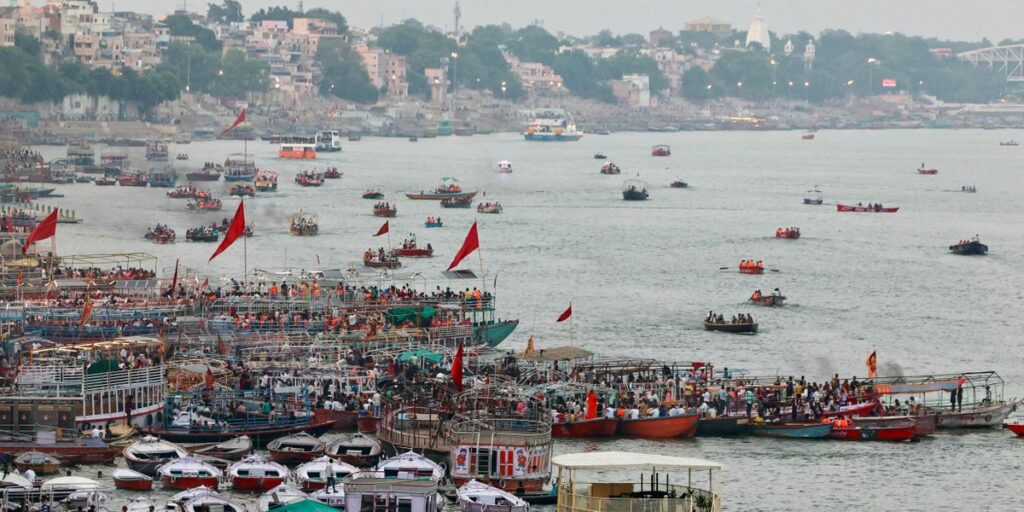X
Copy link
Impact Link
Save
Saved
Read in app
subscribers. Become an Insider
and start reading now.
Have an account? .
- I live in India and have traveled all over the country — but it took me a while to visit Varanasi.
- The city has a rich, spiritual history, but for me, it was just a spot on my bucket list.
- Then, the first time I visited, I fell in love with the city’s beauty, street food, and history.
I’ve spent years traveling across India — from getting stuck in Mumbai traffic to beach-hopping in Goa, road-tripping through the Himalayas, exploring Rajasthan’s palaces, eating my way through Old Delhi, and chasing waterfalls in Meghalaya’s misty hills.
Yet somehow, I’d never been to Varanasi.
When I finally visited last summer, it felt strange to admit I was a first-timer. One of the world’s oldest continuously inhabited cities, Varanasi is hardly a secret. For many Hindus, it’s a sacred place to wash away sins in the Ganges (India’s holiest of rivers) or seek moksha, freedom from the cycle of rebirth.
I wasn’t chasing either. I went out of curiosity, expecting to check a few sights off my list and move on.
Instead, the city got under my skin in the best way.
I’ve been all over India, but Varanasi still felt like a completely new place.
I live in India, so I’m not easily fazed by crowds or chaos. Somehow, though, Varanasi felt like another dimension.
I checked into a hotel near Assi Ghat, toward the south of the city, and set out on foot.
The gullies, or lanes, twisted like a maze. One moment, I was dodging scooters and cows; the next, I was sidestepping puddles and flower petals, while monkeys leaped over tin roofs.
Then, at the end of a lane, I saw the Ganges. It was wide and still, and something about it caught me off guard. I just stood there for a minute, taking it in — calm and quiet, even though everything else around me felt loud and intense.
I visited the city’s sacred cremation grounds and was surprised that I didn’t feel at all uneasy.
Later that day, I walked to Manikarnika Ghat, the city’s main cremation site and one of more than 80 ghats (or riverfront steps) lining the Ganges. I’d heard about it, but being there in person was something else.
I watched a body burning on a wooden pyre. Just steps away, a chai vendor was serving tea, kids were playing, and men were bathing in the river.
It didn’t feel morbid. It felt deeply human, like life and death weren’t opposites, but part of the same cycle that shaped the city.
I expected spirituality, but I found something else.
That evening, I joined a group on a small boat to watch the Ganga Aarti at Dashashwamedh Ghat, near Kashi Vishwanath Temple. It’s a devotional ritual that uses fire as an offering to the river.
The banks were packed. Priests in saffron robes waved multi-tiered lamps and incense sticks in synchrony, as cymbals clanged and chants filled the air. Phone screens glowed across the crowd.
To me, it felt less like a religious ritual and more like a well-rehearsed performance. The ceremony itself was powerful, but because of the mix of people watching it — pilgrims, locals, foreign tourists — was even more moving.
The street food was some of the best I’ve had in India.
Varanasi is a street food haven, and a few dishes stood out enough that I’d go back just to eat them.
One of my favorite meals involved tamatar chaat (mashed tomato mix topped with crispy lentils, chutneys, and house spices) and palak patta chaat (deep-fried spinach leaves topped with yogurt and tamarind sauce) at Deena Chaat Bhandar, a legendary stall that’s served locals for over five decades.
I also enjoyed eating aloo kachori (a fried bread ball typically stuffed with potato) and jalebis (coiled, deep-fried sweets soaked in sugar syrup) at the iconic Ram Bhandar.
Blue Lassi, a tiny, photo-plastered shop in the old city, served the best saffron lassi (yogurt drink) I’ve ever had. I’d often end the day with a paan (a betel leaf packed with areca nuts, rose jam, and slivers of coconut) from a roadside stall.
I also loved taking a quick visit to Sarnath, about 30 minutes away.
On my second day, I took a quick trip to Sarnath, a nearby town where the Buddha gave his first sermon.
I visited the Wat Thai temple, where I saw an 80-foot Buddha statue. On the way back, I stopped at the Sarnath Art Gallery, where I watched a man give a live demo of how Banarasi saris are made.
“Banaras is known for two things — paan and saris,” he said, grinning. “The paan’s in my mouth. The sari’s on the loom.”
I’d always seen saris just as wedding wear. Watching how much time and skill went into every thread gave me a new appreciation for them as pieces of artwork.
I visited Varanasi just to check it off my list — but now, I can’t wait to return.
I was touched by the city’s beauty, delicious food, and contrasts — fire and water, ritual and routine, life and death. Varanasi was only meant to be a quick stop, but it has stayed with me long after my visit.
Read the full article here


